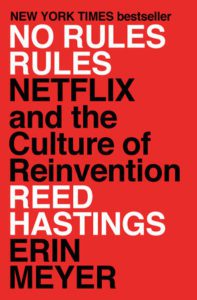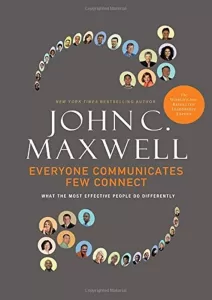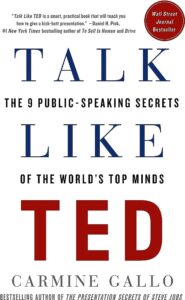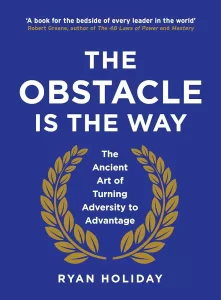Book Review: “No Rules Rules”
Book: No Rules Rules by Reed Hastings and Erin Meyer
Reviewer: Bobby Powers
My Thoughts: 9 of 10
Netflix co-founder and CEO Reed Hastings teamed up with author Erin Meyer to explain the magic behind Netflix's unique culture. Hastings shares how he and the executive team learned how to put more trust in their people, which led them to remove rules and policies, resulting in their "unlimited PTO" policy and their one-sentence expense policy. This book is a great companion to Powerful by Patty McCord, Hastings's former Chief Talent Officer and partner in crime in creating the Netflix culture.
What I Learned from the Book
Everything comes down to your people. If you hire, develop, and retain world-class people, you can strip down your employee handbook to pamphlet-size rather than bible-size. You can also empower your team to make their own decisions, candidly share feedback, and co-create the culture with you.
Selected Quotes and Ideas from the Book
Talent Density
- After the dot-com bubble burst, Netflix was forced to lay off a third of its employees. Although Hastings was devastated to have to lay off the bottom third of his performers, he was shocked to realize afterward that Netflix was doing as much or more work with fewer people. He explains, "After the layoffs, with only the most talented eighty people, we had a smaller amount of talent overall, but the amount of talent per employee was greater. Our talent 'density' had increased. We learned that a company with really dense talent is a company everyone wants to work for. High performers especially thrive in environments where the overall talent density is high."
- Hastings and Patty McCord decided, "Our number one goal, moving forward, would be to do everything we could to retain the post-layoff talent density and all the great things that came with it. We would hire the very best employees and pay at the top of the market. We would coach our managers to have the courage and discipline to get rid of any employees who were displaying undesirable behaviors or weren't performing at exemplary levels."
- "Your number one goal as a leader is to develop a work environment consisting exclusively of stunning colleagues."
- "Jerks, slackers, sweet people with nonstellar performance, or pessimists left on the team will bring down the performance of everyone."
- "In all creative roles, the best is easily ten times better than average."
Candor
- "At Netflix, it is tantamount to being disloyal to the company if you fail to speak up when you disagree with a colleague or have feedback that could be helpful. After all, you could help the business—but you are choosing not to."
- "Frequent candid feedback exponentially magnifies the speed and effectiveness of your team or workforce."
- "If you're serious about candor at some point, you do need to implement mechanisms to assure candor happens."
- Netflix's "4A" feedback framework:
- Aim to Assist: Feedback must be given with positive intent
- Actionable: Feedback must focus on what the recipient can do differently
- Appreciate: Recipient must show they're thankful to receive the feedback
- Accept or Discard: Recipient is required to listen and consider all feedback but is not required to follow it
- "Whenever someone came to me to complain about another employee, I would ask, 'What did that person say when you spoke to him about this directly?'"
Freedom and Responsibility (F&R)
- "At most companies, policies and control processes are put in place to deal with employees who exhibit sloppy, unprofessional, or irresponsible behavior. But if you avoid or over out these people, you don't need the rules. If you build an organization made up of high performers, you can eliminate most controls. The denser the talent, the greater the freedom you can offer."
- "Today, in the information age, what matters is what you achieve, not how many hours you clock, especially for the employees of creative companies like Netflix. I have never paid attention to how many hours people are working."
- "Real life is so much more nuanced than any policy could ever address."
- "Lead with context, not control."
- "When one of your people does something dumb don't blame them. Instead ask yourself what context you failed to set. Are you articulate and inspiring enough in expressing your goals and strategy? Have you clearly explained all the assumptions and risks that will help your team to make good decisions? Are you and your employees highly aligned on vision and objectives?"
Get Rid of Company Policies Around Time Off and Expenses
- "We don't track hours worked per day or week. Why are we tracking days of vacation per year? There was no answer. An employee could be working from 9:00 a.m. to 5:00 p.m. (eight hours) or from 5:00 a.m. to 9:00 p.m. (sixteen hours). That's a 100 percent variation, yet no one monitored it. So why should I care if that employee works fifty weeks a year or forty-eight weeks a year? That's only a 4 percent variation. Patty McCord suggest we remove the policy altogether: 'Let's just say our vacation policy is 'Take Some!'"
- "When you remove the vacation policy, it will leave a hole. What fills the hole is the context the boss provides for the team. Copious discussions must take place, setting the scene for how employees should approach vacation decisions. The practices modeled by the boss will be critical to guide employees as to the appropriate behavior. An office with no vacation policy but a boss who never vacations will result in an office that never vacations."
- "Today the entirety of the travel and expense policy still consists of these five simple words: Act in Netflix's best interest."
- "When you offer freedom, even if you set context and clarify the ramifications of abuse, a small percentage of people will cheat the system. When this happens, don't overreact and create more rules. Just deal with the individual situation and move forward."
Think you’d like this book?
Other books you may enjoy:
Other notable books by the authors:
Want to become a stronger leader?
Sign up to get my exclusive
10-page guide for leaders and learners.





